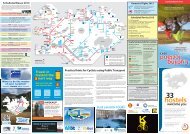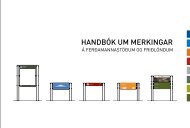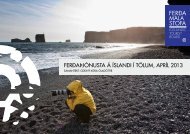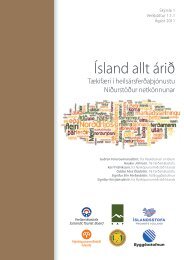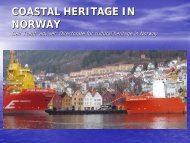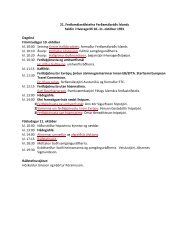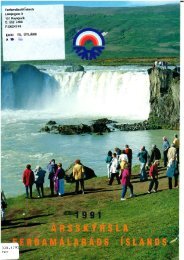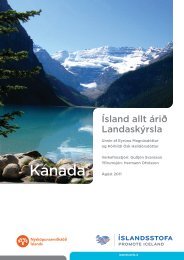Untitled
Untitled
Untitled
Create successful ePaper yourself
Turn your PDF publications into a flip-book with our unique Google optimized e-Paper software.
Addressing the first mentioned side of this apparent paradox, it<br />
becomes readily apparent that tourism is indeed replete with images.<br />
Hence it is unsurprising that the study of “destination imagery”, in a broad<br />
sense, has been a major research area in tourism studies. Given that the<br />
field, or the discipline, itself has had strong roots in business<br />
administration and management it is no wonder that “tourism destination<br />
marketing”, among a host of business perspectives, has been an active<br />
research area. Nevertheless, there are also signs indicating that research on<br />
tourism marketing has often taken quite a narrow perspective:<br />
a significant portion of the tourism marketing literature has focused on a<br />
specific set of topics, such as destination image, Internet marketing, and<br />
market segmentation (Xiang and Petrick 2008, p. 235).<br />
One result has been that the relationship between tourists and the<br />
tourism supply system has often been conceived of as simply one of<br />
buyers and sellers in a dematerialized, a-spatial market. In such<br />
conceptualizations the task for tourism marketers and providers becomes<br />
one of merely assembling different tourism products and service<br />
components, and so make them available on the market for the tourists.<br />
Accordingly, the marketing of tourist destinations seems to have thrived on<br />
a dependence and presentation of clear and concise images (Hunter 2008,<br />
p. 360), under the presumption that they come with a capacity to catch the<br />
attention of potential tourists and possibly change their behaviour in the<br />
direction of a purchase.<br />
The type of destination image research related to this narrow<br />
perspective, we would argue, conceives of the relationship between image<br />
and behaviour in a too simplistic way suggesting that it becomes important<br />
to broaden the picture. Part of that is obviously to recognize the changing<br />
state of affairs that the Internet has brought about. Through it tourism<br />
destination images are becoming increasingly fragmented and ephemeral<br />
in nature (Govers, Go, and Kumar 2007, pp. 977-978).<br />
Today tickets are bought on-line, reservations are made, and plans<br />
changed on the basis of destination images accessed on the Internet, also<br />
during travel while sitting in a café or when surfing the web from a hotel<br />
room. Sometimes, the best way to find a restaurant in Reykjavík is to send<br />
a text message to Sweden. Under this technological umbrella the tourism<br />
business looks more and more like a topologically complex tourism<br />
network, where “the tourist is regarded as a creative, interactive agent, as a<br />
87



